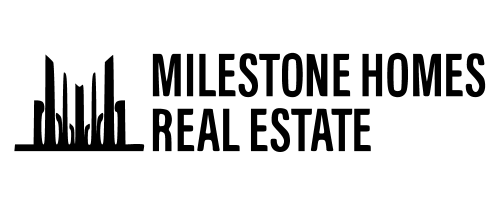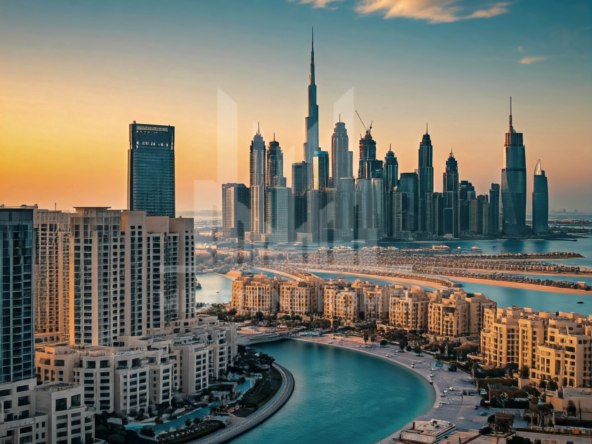Dubai’s ambitious vision for the city’s development continues to take shape with the launch of the Dubai Metro Blue Line project. Officially launched by His Highness Sheikh Mohammed bin Rashid Al Maktoum, Ruler of Dubai and Vice President of the UAE, this new metro line is set to upgrade the city’s transportation network. Scheduled to be fully operational by 2029, the AED 18 billion project will ease connectivity, reduce traffic congestion, and keep Dubai’s position as a global hub for sustainability.
An Overview of the Blue Line Project
The Blue Line is an integral part of Dubai Metro’s expansion plan, running parallel to Sheikh Mohammed Bin Zayed Road (E311). Spanning a total length of 15.5 km, the line features 14 stations with a track width of 30 meters in the majority of its route.
Key Route and Stations
The Blue Line will seamlessly connect prominent urban areas across Dubai, linking business, residential, and leisure hubs. Here are the major urban regions and station locations served by the Blue Line:
Urban Areas Covered:
- Bur Dubai
- Deira
- Downtown
- Business Bay
- Dubai Marina
- Jumeirah Beach Residence
- Expo City Dubai
Station Locations:
- Dubai Creek Harbour
- Dubai Festival City
- Ras Al Khor
- Dubai International City 2 and 3
- Dubai Silicon Oasis
- Academic City
- Metro Depot Al Ruwayyah 3
- Dubai International City 1
- Al Warqaa
- Mirdif City Centre
- Al Rashidiya
Each station will feature modern amenities such as ticketing booths, waiting areas, ramps, restrooms, and prayer rooms, ensuring a comfortable and accessible experience for all commuters.
Integration with Existing Lines
The Blue Line will connect seamlessly with the existing Red and Green Lines, creating a comprehensive transportation network. The key interchanges include:
- Centrepoint Station (connection to the Red Line)
- Creek Station (connection to the Green Line)
This integration will allow for smoother transitions between lines and a more efficient commute across the city.
Timetable and Frequency
Construction of the Blue Line is set to begin in 2024, aligning with Dubai’s vision of completing the project by 2029, the 20th anniversary of the Dubai Metro. Once operational, the Blue Line is expected to follow the same timetable as the Red and Green Lines:
- Monday to Thursday: 5:00 AM to 12:00 AM
- Friday: 5:00 AM to 1:00 AM (next day)
- Saturday: 5:00 AM to 12:00 AM
- Sunday: 8:00 AM to 12:00 AM
Ticketing and Cost Information
Ticket prices for the Blue Line will mirror those of the existing Red and Green Lines, with payments facilitated through Nol Cards. Below is a breakdown of ticket pricing:
| Zones | Silver Card | Gold Card | Personal Card | Red Ticket |
| 1 Zone | AED 3 | AED 6 | AED 3 | AED 4 |
| 2 Adjacent Zones | AED 5 | AED 10 | AED 5 | AED 6 |
| More than 2 Zones | AED 7.5 | AED 15 | AED 7.5 | AED 8.5 |
Discounts:
- Students, seniors, and social affairs beneficiaries: 50% off
- Children under 5 years old: Free
- People of Determination: Free
A Transformational Leap for Dubai’s Real Estate
Dubai focuses on this groundbreaking journey toward a smarter and more connected future. The Dubai Metro Blue Line is anticipated to enhance connectivity and travel across key urban and suburban areas. As a part of Dubai’s ambitious development plans, this addition complements the existing Red and Green Lines. With improved accessibility and reduced travel times, the Blue Line is likely to catalyze growth in neighborhoods along its route.
Real Estate Opportunities
1. Residential Properties
- Increased Demand Near Stations: Areas surrounding the Blue Line stations will attract residents looking for convenient access to public transport.
- Appreciation in Property Values: Proximity to metro stations often leads to increased property prices, as ease of commuting becomes a major selling point.
2. Commercial Properties
- Retail Hubs: Metro stations serve as magnets for foot traffic, creating opportunities for retail outlets, restaurants, and cafes.
- Office Spaces: Businesses may relocate closer to metro lines to provide employees with easier commuting options.
- Co-working Spaces: The demand for flexible office solutions near transport nodes could increase.
3. Hospitality Sector
- Hotels and Short-Term Rentals: Improved connectivity attracts tourists, leading to higher demand for accommodations near stations.
- Mixed-Use Developments: Developers may include hotel components in projects near the Blue Line to cater to transient populations.
4. Urban Growth
- Emerging Areas: Outlying neighborhoods connected by the Blue Line may experience fast urbanization and investment influx.
- Affordable Housing Opportunities: Developers might capitalize on more affordable land prices in urban areas, attracting middle-income buyers.
Considerations for Investors to Buy Property in Dubai
Investing in property in areas influenced by the new Dubai Metro Blue Line is a promising opportunity. However, it requires an approach to maximize returns and know the risks. Here are considerations for investors when buying property along the Blue Line route:
1. Research the Planned Metro Route and Stations
- Identify Key Locations: Analyze the Blue Line route and pinpoint areas with planned metro stations, especially those connecting residential hubs to business districts or tourist hotspots.
- Proximity to Stations: Properties within walking distance (500-800 meters) of metro stations often see higher demand and value appreciation.
2. Evaluate Property Types
- Residential Properties: Look for apartments or villas near metro stations, especially in areas targeting mid-income professionals and families.
- Commercial Properties: Retail and office spaces near busy stations are prime investments due to increased foot traffic.
- Mixed-Use Developments: Projects integrating residential, retail, and commercial spaces around transit hubs offer diversification and stability.
3. Analyze Market Trends
- Price Trends: Study the current pricing of properties along the Blue Line route to identify undervalued areas with growth potential.
- Rental Yields: Assess the rental demand and yield in the target area. High-yield properties near metro lines tend to attract long-term tenants.
4. Consider Long-Term Potential
- Emerging Areas: Properties in developing areas along the Blue Line offer lower entry prices but may require a longer holding period for significant returns.
- Sustainability Features: Look for properties with energy-efficient designs, as sustainability is increasingly valued by buyers and renters.
5. Assess Connectivity and Accessibility
- Connecting to other modes: Check how well the metro line integrates with other transportation systems, such as bus routes and major highways.
- Travel Time to Key Areas: Properties providing quick access to business districts, airports, or tourist attractions will have a competitive edge.
6. Monitor Demand Criteria
- Employment Hubs: Properties near business parks, industrial zones, or free zones along the Blue Line are likely to attract professionals.
- Tourism Appeal: Areas with tourist attractions nearby can offer short-term rental opportunities through platforms like Airbnb.
7. Timing Your Investment
Off-plan Property Purchases: Consider buying off-plan properties before the metro line is operational to benefit from lower prices and higher appreciation post-completion.
8. Work with Experienced Professionals
- Milestone Home Agents: Partner with agents familiar with the Blue Line areas to identify high-potential properties.
- Property Managers: If investing in rental income, hire a reputable property management firm to handle tenant relations and maintenance.
In conclusion, the Dubai Metro Blue Line is set to be a game-changer for the city’s real estate market, promoting sustainable growth and enhancing connectivity. The real estate ecosystem: the developers, investors, and end-users- everyone can benefit a lot from the launch of the new line.


